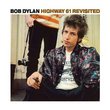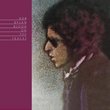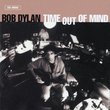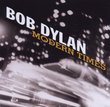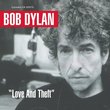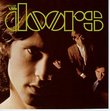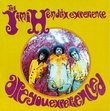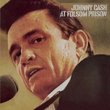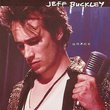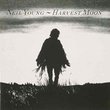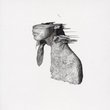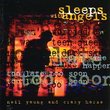| All Artists: Bob Dylan Title: Desire Members Wishing: 0 Total Copies: 0 Label: Sony Release Date: 10/25/1990 Genres: Folk, Pop, Rock, Classic Rock Styles: Contemporary Folk, Singer-Songwriters, Folk Rock, Album-Oriented Rock (AOR) Number of Discs: 1 SwapaCD Credits: 1 UPC: 074643389327 |
Search - Bob Dylan :: Desire
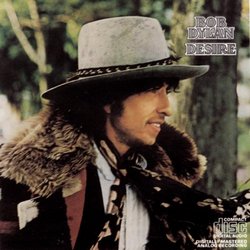 | Bob Dylan Desire Genres: Folk, Pop, Rock, Classic Rock
Dylan shows an unlikely innocence and a greater sense of the world around him on this 1976 follow-up to the more cynical and introspective Blood on the Tracks. Working with lyricist Jacques Levy, Dylan offers a work with r... more » |
Larger Image |
CD DetailsSynopsis
Amazon.com Dylan shows an unlikely innocence and a greater sense of the world around him on this 1976 follow-up to the more cynical and introspective Blood on the Tracks. Working with lyricist Jacques Levy, Dylan offers a work with rougher edges and greater urgency that is distinguished by the prominence of Scarlet Rivera's melancholy violin and Emmylou Harris's bare harmonies. The album features two of Dylan's famous wrongly accused-and-misunderstood-criminal sagas but truly peaks elsewhere. Exotic imagery meshes with simple melody on "Isis," one of Dylan's most appealing rambles. The droning piano and plodding drums propel a mystical journey that contains some of his most insightful (and most ridiculous) lyrics about paranoia, trust, betrayal, and, of course, desire. ("What drives me to you is what drives me insane.") In the end Dylan shows no signs of being jaded by love's fickleness. Delicate and heartbreaking, the finale "Sara" is a gift to his ex-wife that eloquently recounts the wonders of a relationship, perhaps in an attempt to revive it. --Marc Greilsamer Similar CDs
Similarly Requested CDs
|
CD ReviewsSwan song Caleb J. Melamed | Springfield, Illinois | 12/17/2006 (5 out of 5 stars) "Like a time capsule, Desire contains the spirit of a hopeful past. Recorded in July and October 1975 and released in January 1976, Desire is the final third of Dylan's mid-1970s trilogy, whose other parts are Planet Waves (1974) and Blood on the Tracks (1975). Although falling short of the earlier two albums' near perfection, Desire has some of Dylan's most engaging and likeable music, and his most touching love song, "Sara." In many ways, Desire resembles Planet Waves more than it does Blood on the Tracks. On Blood on the Tracks, the lyrics have primary importance, whereas on Planet Waves and Desire the music is essential in uniting these albums' diverse strands. Dylan on Blood on the Tracks is a soloist with accompaniment, but he collaborates on Planet Waves and Desire with other outstanding artists. The members of The Band join Dylan on Planet Waves in a kind of rock chamber music. On Desire, Dylan shares both songwriting and performance. Jacques Levy is co-author of all but two of the songs, and Scarlet Rivera, on violin, and Emmylou Harris and Ronee Blakley, on vocals, are notable among the musicians who help give this album its unique texture. Both Planet Waves and Desire were recorded in the aftermath of war (the Yom Kippur War for Planet Waves; the Vietnam War for Desire), and share an optimism for a better world that brackets Blood on the Tracks' tragic vision. The trilogy's narrative progresses from first to second to third person. Dylan sings as an individual on Planet Waves, but on Blood on the Tracks he finds himself caught in a mirror play of relationships gone wrong. On Desire, Dylan adds a third party, the audience, as an integral part of the performance. Dylan pulls us into Desire by reaching outward. The songs on this album are a series of quests and adventures, all of them searches for justice or love. The stories range from a police frame-up in urban America ("Hurricane"), to a romantic idyll in Africa ("Mozambique"), to a fantastic hunt for treasure inside a frozen pyramid by the wayward husband (Dylan) of an Egyptian goddess ("Isis"). In "Black Diamond Bay," Dylan actually becomes an audience member. This song recounts the last hours in the lives of several lonely and isolated hotel guests on a sinking volcanic island. Dylan learns about the catastrophe only in the final stanza, when he hears a fragmentory report by Walter Cronkite on the television news. The music of Desire varies with its locations and themes. In "One More Cup of Coffee (Valley Below)," Dylan laments his rejection by a bandit chieftain's beautiful daughter, in a style the poet Allen Ginsberg describes (in his album notes) as "Hebraic cantillation never heard before in U.S. song." The oceanic "Oh, Sister" is hymn-like in its plea for a loving partnership under the fatherhood of God. The accordion in "Joey" (Dom Cortese) evokes the Italian-American background of its real-life protagonist, Joey Gallo, a man "caught between the mob and the men in blue." "Romance in Durango" achieves its Mexican atmosphere through the sound of a Bellzouki 12-string guitar (Vincent Bell), trumpet, accordion and tambourine, as Dylan sings, partly in Spanish, about a killer's flight across the desert with his beloved Magdalena. The eclectic nature of the album invites us to become a part of its creative process--we do not feel distanced by a single-minded vision of the artist. Hearing its songs allows us to draw our own poetic map of the world. Two songs on Desire deserve special mention. "Hurricane" tells the true story of African-American middleweight boxer Rubin "Hurricane" Carter, framed for a triple murder in Paterson, New Jersey. Paced like a hard-boiled crime movie, "Hurricane" is both a compelling plea for Carter's freedom and a condemnation of racial prejudice in the American judicial system, "where justice is a game." The song publicized Carter's plight (later, Dylan held two concerts to raise legal defense funds) and helped win Carter a new trial in the fall of 1976. The jewel of this album is its last song, the inexpressibly poignant "Sara," addressed to Dylan's wife. In an unsentimental but emotional voice, Dylan sings a simple modal melody on top of Scarlet Rivera's haunting violin. The verses are a succession of flashbacks of the Dylans' life together, interspersed by a "Sara, Sara" refrain praising his wife's beauty, kindness, and mystery. Dylan recalls their children, still babies, playing on the beach; Sara in a Jamaican marketplace; himself "staying up for days in the Chelsea Hotel, writing 'Sad Eyed Lady of the Lowlands' for you." He concludes with the words, "don't ever leave me, don't ever go." The song feels transitory, evanescent, in contrast to "Wedding Song" on Planet Waves, where Dylan sings of the eternal verities of their marriage ("I love you more than ever, more than time and more than love"). After recording Desire, Dylan continued his deep audience connection by launching the Rolling Thunder Revue. With an all-star cast headed by Dylan and featuring Joan Baez, the Revue caravaned across the Northeastern states and neighboring parts of Canada (autumn 1975), and then through the South and Southwest (spring 1976). Its unpublicized itinerary was filled with surprise concert dates. From the Desire sessions, Rivera, Blaklee, Rob Stoner (bass), and Howard Wyeth (drums) joined this true people's tour. But the circumstances that made Desire possible soon disappeared, as the places and people portrayed in many of its songs fell upon harder times. The new nation of Mozambique, whose freedom Desire celebrates, was devastated by a civil war. The old Mexico depicted in "Romance in Durango" became largely a memory following economic globalization and NAFTA. Rubin Carter was convicted in his second trial and not released on parole until 1988. And in 1977, Dylan's marriage to Sara ended in divorce, after which it seems he could no longer follow the same artistic path. Desire marks the completion of a grand cycle of Dylan's career, dating back to his first albums in the early 1960s. His next album, Street Legal (1978), reveals, beneath its "big band" gloss, a dark night of the soul. From Street Legal's first song, the aptly named "Changing of the Guards," we are in a new era." Bob Dylan's best album since "Blood on the Tracks". Or "Bob rcb | Austin, TX United States | 05/12/2007 (5 out of 5 stars) "Over and over, I hear that phrase, "best Dylan album since Blood on the Tracks" used to describe new Dylan albums. I guess those people haven't heard "Desire", which is arguably rather better than "Blood on the Tracks", and came out a year later. "One More Cup of coffee"? "Sara"? "oh, Sister"? Scarlet Rivera's violin? Emmylou? I have all of Dylan's albums. This is the best one ever, and considering just how good some of those other albums were, that is something very good indeed. Enjoy." King of the Streets, Child of Pain David Zimmerman | Baton Rouge, LA USA | 12/25/2006 (5 out of 5 stars) "I've always been a fan of Dylan's long form songs--"Like a Rolling Stone", "Desolation Row", "Frankie Lee and Judas Priest" and "Jack of Hearts", among others. "Desire", released directly after "Blood on the Tracks" has three such opuses, and I've loved 'em all for 30 years. The band that played at my wedding reception in 1991 played "Hurricane", the story of prizefighter Ruben Carter's arrest for a murder he may not have committed. "Isis", a fantastical and allegorical tale of a treasure hunter, may not quite measure up to opus status by way of length, but the twists and turns taken by Dylan's story are always captivating--along with the great images and rhymes, my favorite being "the wind it was howling and the snow was outrageous/we chopped through the night and we chopped through the dawn/when he died I hoped that it wasn't contagious/but I made up my mind that I had to go on." The third of the trio, "Joey", is certainly an opus--both lyrically and musically with its evocative accordion and violin accompaniment, along with Emmylou Harris's harmonies. "One day they blew him down/in a clam bar in New York/he could see it coming through the door as he lifted up his fork/he pushed the table over to protect his family/then he staggered out into the streets of Little Italy." Maybe Bob is borrowing from The Godfather here, but it's still a vivid and arresting image to me. Others in here have dismissed "Mozambique" as a lightweight song, but its catchy melody provides a good counterpoint to life on the ground in that country, which I don't think is near as idyllic as Bob describes. The remaining songs "Black Diamond Bay", "Cup of Coffee", "Durango" and "Sara" are all good--they just don't grab me like three of my favorite Dylan story songs do."
|

 Track Listings (9) - Disc #1
Track Listings (9) - Disc #1